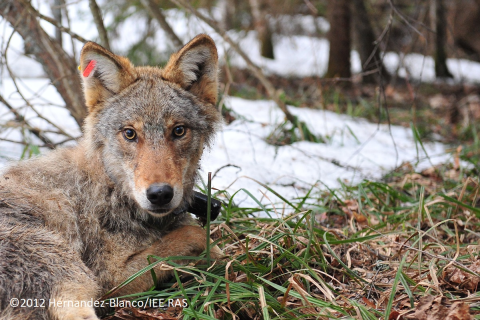
The tradition of studying the wolf in the Soviet Union and Russia has deep roots and its own history. In the 70-90s of the last century, a group of wolf cub specialists actively worked in the country, which then turned into the Commission on Large Predators at the Theriological Society. Its leader was Professor D.I. Bibikov. This group regularly summarized all the newly acquired information and studies related to the biology of the wolf. However, in recent years there has been no such unifying principle. An article by authors from the Laboratory of Behavior and Behavioral Ecology of Mammals of the IEE RAS and the Society for the Conservation of Wildlife considers modern research on the wolf in Russia. The authors set as their goal to acquaint readers with the results obtained in Russia at the beginning of the 21st century. The work was published in Frontiers of Ecology and Evolution (Q1 WoS).
The authors analyzed the literature on the study of the wolf in the 21st century. Research on wolves in Russia is carried out in various areas, such as population structure and population density in various regions, methods of population control and management, minimization of damage from predation by wolves, the relationship between wolves and their prey, general issues of behavior and behavioral ecology of the wolf, spatial organization, population genetics, phytogeography and phylogeny, wolf morphology, paleontology and domestication issues, helminthology, parasitology and the role of wolves in the spread of rabies. Works devoted to the wolf in Russia are published mainly in Russian and often in hard to acquire and little known publications and journals, which makes them practically inaccessible to the world scientific community. In this respect, works on paleontology and the history of the domestication of the dog present a pleasant striking contrast. As a rule, these works are published by large international teams in high-ranking scientific publications. An important part of these works is the results of whole genome sequencing of ancient and modern DNA and the construction of possible scenarios of the distribution, migrations and history of the interaction of the wolf with humans.
The paper notes that Russian researchers are far behind the modern international level of study of wolves in technical terms. Thus, satellite GPS telemetry is used in isolated cases, and camera trap matrices and other modern remote methods for obtaining information are also clearly insufficiently used. However, there is a tendency of changing for the better.
The largest part of the world's range of the wolf is located in Russia, where the species lives almost everywhere, in a wide variety of ecosystems and landscapes, from arctic deserts and tundras to steppes and semi-deserts. In such different habitats, this amazing species demonstrates a variety of adaptation strategies not only to natural conditions, but also to various types of anthropogenic influence. The widest set of human interaction scenarios and local adaptation patterns requires a large number of specialists for study and monitoring. With regard to the wolf, a differentiated approach to population management should be implemented, where scientifically sound and well-designed methods of monitoring and management should be of paramount importance. Unfortunately, the hunting press is still dominated by ideas about the extermination of wolves and a sharp reduction in their numbers. It is impossible to allow the extermination of wolves in any region of the country, and all subspecies of the wolf inhabiting the Russian Federation must be preserved. Currently, there is a clear shortage of qualified wolf specialists and attention to this most interesting species.
